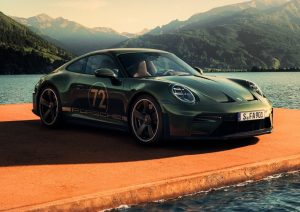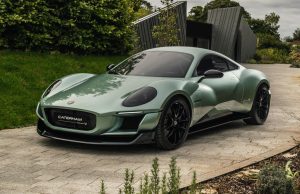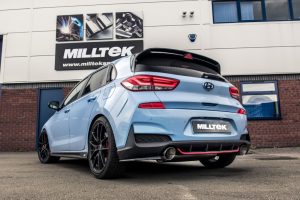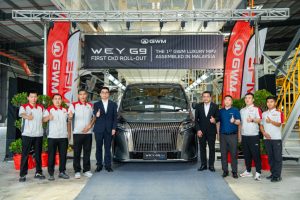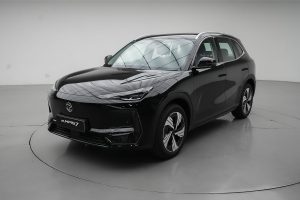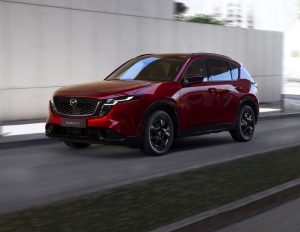Fluidic and somewhat compact, the smart #1 is an electric vehicle (EV) that provides comfort, connectivity and convenience in any drive.
Available in Premium and Brabus variants for our recent media trip from Kuala Lumpur to Penang, these EVs showed their road-going abilities and gave an idea of whether they were up for a long drive.
Motoring writers converged bright and early at Pinnacle Karting – a go-kart circuit located along the Elite Plus Highway, Subang Jaya, that served as the venue for the cars to tackle an obstacle course.

As tight as a go-kart circuit is, we were able to experience the dynamism both variants had to offer.
Starting with the Brabus variant priced at RM249,000 (on-the-road without insurance), this EV has 422hp (315kW) and 543Nm of instant performance via a dual-motor setup (one for each axle).
In “Brabus” driving mode, this high-riding hatchback will leave the driver bewildered by its ability to sprint from 0 to 100kph in 3.9 seconds – a definite venture into high-performance car territory.
The Premium variant at RM219,000 was slower having just one motor on the rear axle providing 268hp (200kW) and 343Nm with 0 to 100kph dispatched 6.7 seconds instead.

With all that power, can these EVs remain driveable? Yes, indeed.
Navigating through the obstacle course, both variants provided a decent bite from the brakes but while throwing them through a series of corners, a surprise lane-change and finally a slalom, there’s quite an amount of roll present.
Regardless of variant, both will display plenty of pitch and roll as the comfort-tuned suspension tries its level best to keep the vehicle from spinning out.

The Brabus, despite having been fitted with a sports suspension, is only slightly better.
Meanwhile, the tyres are simply screeching for the ECU to reduce throttle as the vehicle gets thrown around the continuous onslaught of bends and sudden directional changes.
A brief experience of the brand’s newly introduced Evasive Manoeuvre Assist system was also provided whereby working with the vehicle’s forward collision warning and blind spot detection system, the EV was able to automatically steer to avoid crashing into the vehicle ahead that had suddenly slowed down.

So long as the opposite lane is clear, the system will intervene.
Additionally, the vehicle’s 360-degree park assist system allowed the driver to monitor the parking progress through a large 12.8-inch LCD touchscreen.
Following the conclusion of such dynamic activities and the afternoon sun blaring down its heat, it was time for the journey to Penang.

Starting with 86% left in the lithium nickel manganese cobalt (NMC) battery pack, 325km of range was indicated and the drive would take us to our first stop at a 120kW Direct Current (DC) charger operated by Gentari – located next to a Petronas fuel station on Jalan Sultan Azlan Shah in Ipoh, Perak.
Upon arrival, the vehicle’s system indicated that 209km had been covered, taking two hours and 48 minutes to complete with an average speed of 74kph and 46kWh of power consumed.
At this point, the battery’s State of Charge (SoC) was about 15% with an indicated 64km of range and an obvious amount of holdback from the Brabus’ throttle response to prevent excessive use of power.

Although the vehicle did show that it was possible to reach the destination in Penang (as indicated by a point within the yellow zone), it was obvious that we needed to travel at slower speeds of around the 50kph mark.
Thanks to the NMC battery pack being able to accept up to 150kW of quick DC recharging power we were able to bring the vehicle’s SoC back up to 73% in about 40 minutes (meanwhile enjoying some American fast food next to the fuel station).
Since there was another user at the same charging station, only 60kW was dispensed during our recharge time.

Onwards to our final destination, the Brabus was able to complete the journey some two hours and 15 minutes later by consuming 36kW of power and reducing the battery’s SoC down to about 20%.
This brought our total driving time (not inclusive of recharging time) to five hours and 33 minutes, covering 390km with an average speed of 70kph and an average consumption of 17.8kWh per 100km.
The trip was achievable on a single charge but it took a total driving time of about eight hours.

This journey would seem long, especially for those used to travelling at 110kph - or higher.
At legal speed limits, there’s plenty of comfort accorded by the quiet cabin as the suspension soaks up the uneven patches and deals with undulations with utmost care – thanks in part to its 182mm ride height for plenty of suspension articulation.
Regardless of variant, the smart #1 is fluid in appearance and the inclusion of pop-out door handles keep it looking sleek and sporty – especially with those 19-inch Rotor/Dynamo (Brabus) alloy wheels fitted with 235/45 series tyres.

Although the cabin can be inun dated with too many alert beeps from the multitude of advanced driver aid systems (ADAS) included, it can be minimised by turning some off – it just requires some poking around on the centre touchscreen, which houses the climate controls among many others as well.
While there’s plenty of range (Brabus gets 400km and Premium 440km) from the 66kWh battery, the EV’s good amount of cabin space along with the 13-speaker Beats audio system with Apple CarPlay and Android Auto connectivity make it a pleasant place to be in.
Adding the convenience of a wireless smartphone charger, the choice of using USB-A and Type-C ports, adaptive cruise control, ventilated seats and a multi-coloured heads-up display (HUD), make this EV a comfortable commute.

If need be, there’s also a long list of ADAS functions to help driver and passengers stay safe along with seven airbags as standard.
The overall specification of the Premium is attractive and makes it a choice pick without looking too flashy like the Brabus.

Both the Brabus and Premium variants have the same amount of equipment and are just as comfortable and convenient when out and about and they will be able to turn heads just as easily.
Both versions come with duotone exterior colours to give them that trendy look.

